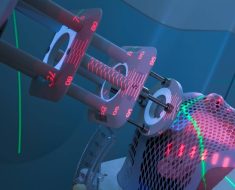Forward Networks today introduced AI Assist, a new capability integrated into its flagship digital-twin platform that lets network and security professionals use natural language prompts to conduct queries across devices and environments to expedite problem identification and resolution.
AI Assist works with Network Query Engine (NQE), tapping into the network device and cloud data in the Forward Enterprise digital twin platform to help streamline network operations and provide insights into network behavior. AI Assist can also generate natural language explanations for existing queries, helping IT teams to more quickly make sense of the search results.
“We offer a software platform that collects the running configuration from networking devices, such as switches, routers, load balancers, firewalls, and more. It collects a running configuration from these devices and builds a behaviorally accurate, end-to-end model of the network,” says Nikhil Handigol, co-founder of Forward Networks. “We are developing the world’s leading networking large language model (LLM), laying the groundwork for the future features that proactively assist engineers, enhance the efficiency and safety of changes, and aid in determining optimal network configurations.”
Forward Enterprise automatically discovers and creates a topology, or a digital twin, of enterprise networks including on-premises and cloud infrastructure. It creates an inventory of all possible routes that traffic can take in the network, eliminating the need for network teams to do this manually by mapping packet flows or using a ping and traceroute.
Industry watchers say that the complexity of modern network environments is too difficult to track by purely manual efforts.
“It is increasingly difficult for enterprise network teams to keep up with the growing rate of software updates from vendors. [Infrastructure and operations] leaders must begin using network digital twins to reduce risk and chaos by automating testing their configuration, policies, and equipment,” according to a recent Gartner report. The research firm predicts that “by 2027, 15% of enterprise customers will be using campus network digital twins for testing or validation, up from less than 1% in 2023.”




